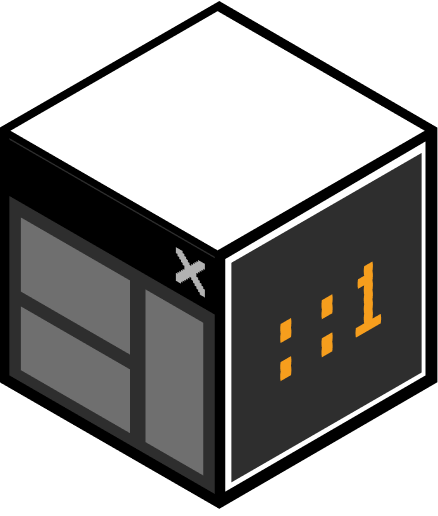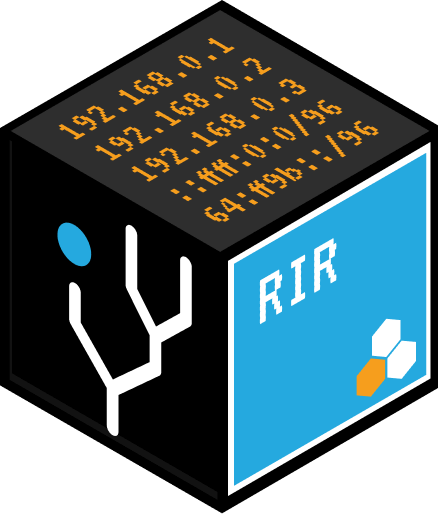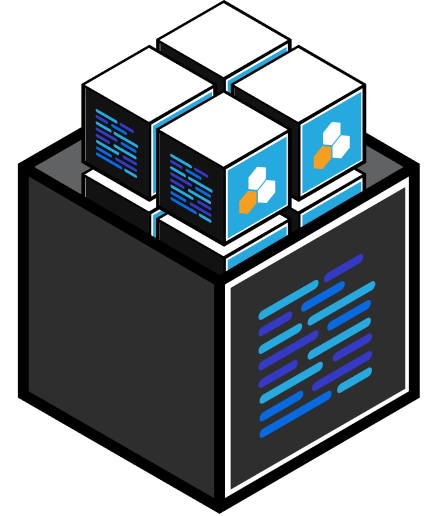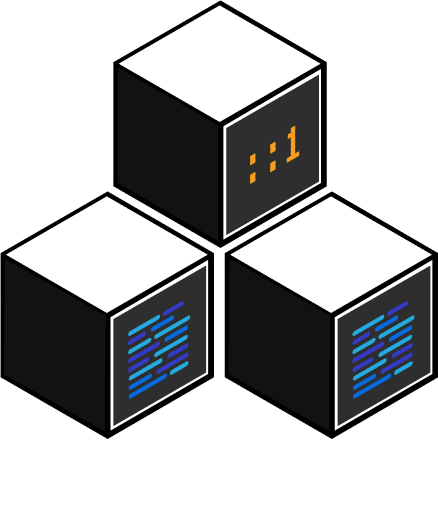Making the Transition from IPv4 to IPv6 represents an important crossroads for growing technology companies. Leverage our team’s depth of expertise to avoid the pitfalls that are inherent to legacy solutions. TCP/IP is the technology that devices use to interact online. What allows each device to get online and communicate is that each one has an unique IP address. IP addresses enable each device to interact with each other over the Global Internet. From desktops, to laptops, to cell phones, to airplanes, to IP enabled washers and dryers – most things will be connected online. This means we need a lot more addresses than are available today.
At the inception of the Internet, IP version 4 (IPv4) was and is currently the most widespread protocol used to communicate. By their binary nature, IP addresses are a finite resource and the original founders of the Internet established, at the time, 2^32 unique IP Addresses or ~ 4.3 Billion addresses. While 4.3 Billion might seem like a vast number, the growing amount of Internet participation has exhausted this supply – in fact, it has been predicted that by 2020, there will be more than 7 Internet-enabled devices for every man, woman, and child on planet earth. In February, 2011, the keeper of the free address pool, the Internet Assigned Numbers Authority (IANA) fully exhausted and allocated all of the IPv4 addresses.
To continue the operation of the Internet, Internet Protocol version 6 (IPv6) was created. The address space created in IPv6 is vast – 2^128 or more than 170 undecillion addresses – and unlikely to be depleted in the next 50 years. Everything online must transition to include both IPv6 and IPv4 and eventually transition entirely to the new IPv6 protocol.
IPv6 as created in the mid ‘90s as a result of engineering efforts to keep the Internet growing. It is an entirely new protocol that is not “backwards compatible” with IPv4. However, both protocols can run simultaneously over the same “wires”. This means that there will be a progressive transition (picking up pace from this point forward) from IPv4 to IPv6 commencing with devices that support both protocols (also known as dual stacking). Eventually, IPv4 will cease to be supported and in the end, all IPv4 only devices will no longer be able to communicate with the IPv6 enabled Internet.
Thankfully, the transition to IPv6 has been underway for a while now. For example, all US Government public-facing servers are slated to be IPv6 compatible by September of 2012, and internal US Federal systems must be IPv6 ready by 2014. Companies, starting with service providers like ATT & Comcast are well underway in their conversions. Furthermore, 256 out of 306 Top Level Domains (TLDs) (.com or .net or .nl or .biz) are already enabled for IPv6.
How the Internet is “Inter” connected
To understand how we will be affected, it is helpful to understand how the Internet is actually “inter-connected”. The Internet is literally a “web” of networks all connected to each other – from our home network that has 2 or 3 computers to ISPs to online companies like Amazon &eBay.
In the middle of this diagram, the “Internet” is a collection of all the world’s networks interconnected together so that we, an end-user, can get from point A to point B (or “routed”) across all of these networks. In the end, this means that everyone online and everyone who wants to be online will be undergoing the upgrade to IPv6 starting with getting a new IPv6 address.
At the end of the day, the biggest and most noticeable difference between IPv4 and IPv6 are the actual IP addresses being used. IPv4 has a 32-bit string of numbers that often looks like the following:
202.127.212.134.
This “address” is a part of a pool of addresses managed by IANA as described earlier. As this address pool has been depleted, all new requests for addresses will only be able to get a v6 address. IPv6 addresses are quite a bit more complex – they are 128-bit addresses:
3ffe:1900:4545:3:200:f8ff:fe21:67cf
There are many advantages to this more complex address schema in addition to the fact that now every device will have it’s own unique identifier. Ironically, the longer address will actually help to improve end-user experience online as the Internet architecture will see improvements with respect to traffic congestion, application specificity, security, and much more.
We have established that every Internet-enable device must have a unique IP address. Now what does this mean for the various constituencies accessing the Internet?
For most end-users at home, this transition will happen automatically and will be mostly unnoticeable. They will get their current and updated addresses from their ISP; businesses will have their IT departments configure their own networks so that their customers (the business) will automatically get their addresses, etc. Therefore those most concerned about this transformation are those that actually manage portions of the Internet: service providers, I/PaaS providers, online content & application service providers, and businesses that run their own networks.
As we see from the chart below, most end-users and small businesses will really only be responsible for ensuring that they have purchased IPv6 enabled devices including: computers, wireless access points, smart phones, printers and game consoles. Most devices purchased after 2007 are in fact IPv6 enabled. For example, Microsoft has been IPv6 enabled since version Windows XP-SP1 as well as commensurate Apple OSs.
The heavy lifting will be shouldered by the ISPs, I/PaaS, Content/ASPs and businesses that manage their own networks.
There are approximately 66,000 registered Autonomous Systems (AS). These “networks” are run by ISPs, I/PaaS, ASP/Content as well as government & education organizations. All of these “networks” imply a level of self administration, hence “Autonomous,” and will require their Network Administrators to follow this simple review:
Assess the network for IPv4 only devices, dual stacked devices (IPv4 & IPv6), as well as IPv6 only devices (not many of these yet).
- Layout an IPv6 network architecture starting with an Address Schema (which entails sub-netting).
- Determine your “stop gap” measures for IPv4 only devices. There are many “translation” scenarios that can be employed temporarily to ease burden of next step, however, one should note that like 8 track tapes used for playing music, using IPv4 only will impact your Internet experience and over time cease to operate.
- Provide a rip/replace plan for those things not capable of supporting IPv6.
- Commence upgrade.
These are certainly not trivial steps in transitioning to v6, however again, these are exclusive to service providers – those directly involved in managing networks. It does not preclude end users or SMBs from being aware of this change and ensuring their own devices are compatible.
So hopefully this section has given a snap-shot of the “Internet Infrastructure Ecosystem” and how each “vertical” will be affected by this transition. Furthermore, while not intended to cry wolf nor claim the Internet will die, for those who are involved in the upgrade of their own networks this has catalyzed them to commence the transition. Now the next logical question – when do you really need to do this?
IPv6 Transition – when do we really need to start?
The transition to IPv6 is well under way and has been fueled by the IANA announcement andAPNIC announcement (RIPE & ARIN will be next to run out and both should be out in 2011). We also saw a massive IPv6 “World Day” on June 8th, 2011, that tested our IPv6 readiness. So how does this translate into when you have to get yourself, your business or your organization ready?
While everyone should be aware that this transition is underway, the “services providers” are really the ones impacted in the near term as it is their jobs to provide Internet access or access to Internet infrastructure, which has to be IPv6 moving forward. Given the lack of backwards compatibility, this will require some education, hardware and software upgrades, and re-thinking about how to layout a network. This is due to the fact that the IPv4 mind-set was one of “scarce resources” (we will run out of addresses). In an IPv6 world, you have nearly unlimited resources and can plan your network IP Address plan very differently.
ISPs, I/PaaS, ASP/content providers should be in the midst of transition and if they are not, now is the time. Enterprises will have to assess their own network needs but is not of immediate urgency. And, finally, SMBs and end-users will really only have to track their own ISP’s steps to upgrade to IPv6 as well as be aware of existing and future technology purchases.
At the end of the day the entire Internet should run more smoothly and securely on IPv6.
The steps those undertaking this transition will need to make are also a significant opportunity to automate many rote network processes. The general steps, and where automation can play a significant role are as follows:
In subsequent articles we will be diving into software tools to help service providers and enterprises in this transition and what some of the emerging best practices will be in the areas of IPv6 Automation, IPv6 Security, and IPv6 as it relates to Asset Tracking.







